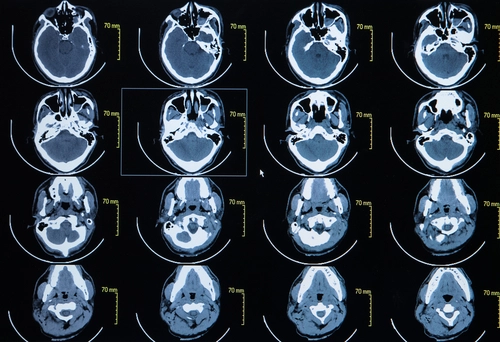Radiology Coding Alert
Learn If Trabecular Bone Score Codes Require New Scans
Does documentation of a T-score point to a TBS code? Trabecular bone scores (TBS) provide physicians with an accurate picture of their patient’s fracture risk. Providers combine them with dual X-ray absorptiometry (DXA) scans to assess the structural quality of a patient’s bones, making TBS an ideal procedure for evaluating patients diagnosed with osteoporosis or osteopenia. Read on to identify a TBS in a report and learn how to assign the correct CPT® code. Gain Insight Into a Bone’s Microarchitecture Trabecular bone is the spongy or porous bone found within the hard, outer cortical bone. This bone is found in the vertebral bodies as well as the epiphyses (ends) and metaphyses (necks) of long bones. While spongy, the trabecular bone lattice adds strength and creates a framework for the bone marrow inside the bone pores. Trabecular bone also functions as the primary load-bearing structure in vertebral bodies. By assessing the health of the trabecular bone, providers can help determine a patient’s fracture risk. To do this, providers measure a TBS. “A trabecular bone score calculates the microarchitecture of the bone. It focuses on the structure quality of the bone, in addition to the bone mineral density from a DXA study,” says Chelsea Kemp, RHIT, CCS, COC, CDEO, CPMA, CRC, CCC, CEDC, CGIC, AAPC-Approved Instructor, outpatient coding educator/auditor at Yale New Haven Health in New Haven, Connecticut. Why would a provider order a TBS? The main use of a TBS is “alongside measures of bone density in better predicting fracture risk in people with metabolic bone problems, like osteoporosis,” says Christine Hall, CHC, CPC, CPB, CPMA, CRC, CPC-I, senior consultant at Stirling Global Solutions LLC in Port St. Lucie, Florida. Since certain metabolic bone diseases typically begin in the trabecular bone, patients with certain conditions are ideal candidates for the service. “Patients who have osteopenia or osteoporosis and are at high risk for fractures due to the disease,” Kemp adds. Osteopenia is a condition where the patient’s bones become weaker as the bones lose mass. Osteoporosis is a condition where the patient’s bones become weak and brittle over time. Do Bone Score Calculations Require Additional Equipment? DXA scans, coded to 77080-77085 (Dual-energy X-ray absorptiometry (DXA), bone density study, 1 or more sites; …) are effective in helping physicians understand a patient’s bone density, but adding TBS can help physicians predict pathological fractures (break in a bone due to an underlying disease) in their patients. For example, researchers found they can predict major fractures of the spine with greater accuracy with TBS rather than just using DXA scans alone (https://pubmed.ncbi.nlm.nih.gov/21887701/). TBS “is a textural index that evaluates pixel gray-level variations in the lumbar spine DXA (dual energy X-ray absorptiometry) image,” says Hall. Put more simply, during a TBS procedure, the clinician uses a DXA scanner or other imaging device to evaluate the patient’s bone structure. As the patient undergoes the DXA scan, TBS software installed on the DXA equipment measures the amount of bone in different areas as well as other factors and produces a score that estimates the patient’s fracture risk. Additionally, the provider can perform a TBS using imaging data acquired during a prior DXA scan. Discover When to Report 4 New TBS Codes Effective Jan. 1, 2022, you have four CPT® codes to choose from when reporting TBS procedures. The TBS codes in the 2022 CPT® code set include: You’ll assign 77089 if you have a report where the provider uses TBS software and imaging data from a DXA scanner or other device, interprets the data, and then reports the patient’s risk of fracture. If another qualified health professional (QHP) evaluates the data and reports the fracture risk, then you’ll assign 77092. If a provider performed only a technical calculation of the TBS to estimate the patient’s fracture risk, then you’ll assign 77091. However, if the provider prepares the imaging data and sends it to another site for analysis, then you’ll assign 77090. Scenario: A 75-year-old female patient presents to your radiology practice to assess her fracture risk with a TBS. The patient recently underwent a bone density study via a DXA scan. Her primary care physician (PCP) diagnosed her with M81.0 (Age-related osteoporosis without current pathological fracture). Even though she hasn’t experienced a pathological fracture yet, her physician ordered a TBS to gauge her risk of fracture due to her age-related osteoporosis and to further evaluate her bone structure. The radiologist uses the data from the recent DXA scan with TBS software. After the procedure, the radiologist calculates the results, interprets the data, and reports their findings to the patient’s PCP. In this scenario, you’ll assign 77089 to report the TBS service since the radiologist performed the procedure, calculations, interpretation, and submitted their report. Know How to Find TBS on a Report If you’re concerned about how to read a report that involves new codes, you can rest easy. “If the coder has access to the scanned report with the bone quality graphs, the TBS mapping will be easy to identify and confirm,” Kemp says. Terms such as “TBS” or “TBS score” are easy to identify on documentation, even for new coders. However, TBS scores are “not to be confused with ‘T-score,’ which is used to identify bone density,” Kemp adds. As these codes are new for 2022, you’ll want to put in extra effort to ensure that you’re confirming the provider performed and documented the specific elements of the procedures properly.

Related Articles
Radiology Coding Alert
- Trabecular Bone Scores:
Learn If Trabecular Bone Score Codes Require New Scans
Does documentation of a T-score point to a TBS code? Trabecular bone scores (TBS) provide [...] - Coding Tips:
Use These 5 Tips to Refine Your Renal Cell Cancer Coding Skills
Eliminate incidental findings from your coding for a cleaner claim. Computed tomography (CT) and magnetic [...] - ICD-10-CM 2022:
Report Severe Brain Injuries Using New Brain Compression Codes
An estimated 1.5 million people suffer a traumatic brain injury each year. Before Oct. 1, [...] - You Be the Coder:
Pinpoint the Right Codes by Following the Implant Guidelines
Question: A 24-year-old patient comes into the emergency department (ED) presenting severe acute pain in [...] - Reader Questions:
Can You Code Bone Length Studies and Knee X-rays Together?
Question: Following a patient’s knee replacement, a physician performed a bone length study and captured anteroposterior [...] - Reader Questions:
Leave Low Back Pain Off Your Claim When Reporting M43.16
Question: Our radiologist captured two X-ray views of a 75-year-old patient’s L1-L5 vertebrae. The patient was [...]




